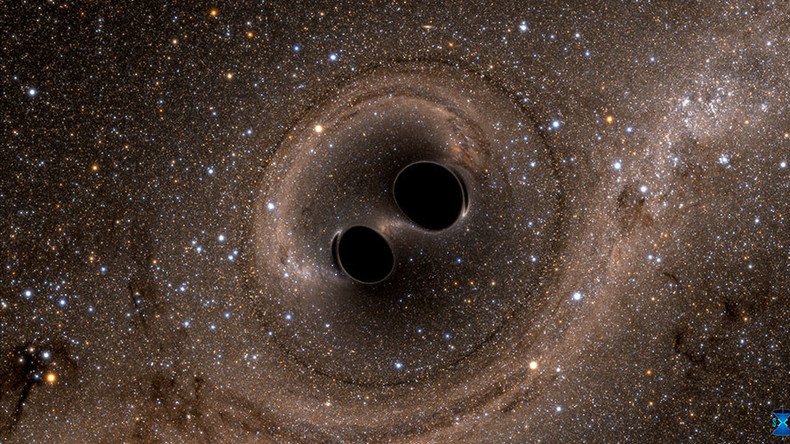‘Win for Einstein’: Nobel Prize winners find gravitational waves in space

Three US-based scientists won the Nobel Physics Prize for detecting faint ripples flying through space, the gravitational waves predicted a century ago by Albert Einstein. The discovery gives astronomers a a new way to view the universe.
“It’s a win for the human race as a whole,” one of the recipients, Cal Tech’s Kip Thorne told AP. “The gravitational waves will be powerful ways for the human race to explore the universe.”
Utah-born Kip Thorne wins the Nobel Prize for physics for his role in detecting gravitational waveshttps://t.co/QsgZYCXAGypic.twitter.com/NyLjiCVCn1
— Salt Lake Tribune (@sltrib) October 3, 2017
The other recipients were Rainer Weiss, of the Massachusetts Institute of Technology (MIT), and Barry Barish, also of the California Institute of Technology (Cal Tech), who were responsible for designing and developing the Laser Interferometer Gravitational-wave Observatory (LIGO).
“I view this more as a thing that recognizes the work of a thousand people,” MIT’s Weiss told reporters at the announcement news conference.
Scientists won the Nobel Prize for detecting gravitational waves — here's why that matters pic.twitter.com/wr9nFhAPAZ
— Business Insider (@businessinsider) October 3, 2017
Gravitational waves are extremely faint ripples in space, generated by some of the most violent events in the universe. The waves detected by the Nobel laureates in September 2015 came from the collision of two black holes some 1.3 billion light years away. A light year is about 5.88 trillion miles (9.5 trillion km).
The discovery ushers in a new era of gravitational-wave astronomy and provides astronomers with a new set of tools to probe the cosmos. Astronomers previously relied on light, x-rays, radio waves, and other types of electromagnetic radiation emanating from objects in space.
“Now, astronomers can learn about cosmic objects through the quivers they made in space and time,”Cal Tech said in a news release.
In describing the process to non-experts, the Swiss Royal Academy of Sciences said gravitational waves “are always created when a mass accelerates, like when a ice-skater pirouettes or a pair of black holes rotate around each other.”
The waves were predicted by Einstein in 1916 as part of his theory of general relativity, which argues that gravity is caused by heavy objects bending space-time, which itself is the four-dimensional way that astronomers see the universe.
The prize is “a win for Einstein, and a very big one,” Caltech's Barish told the AP.












